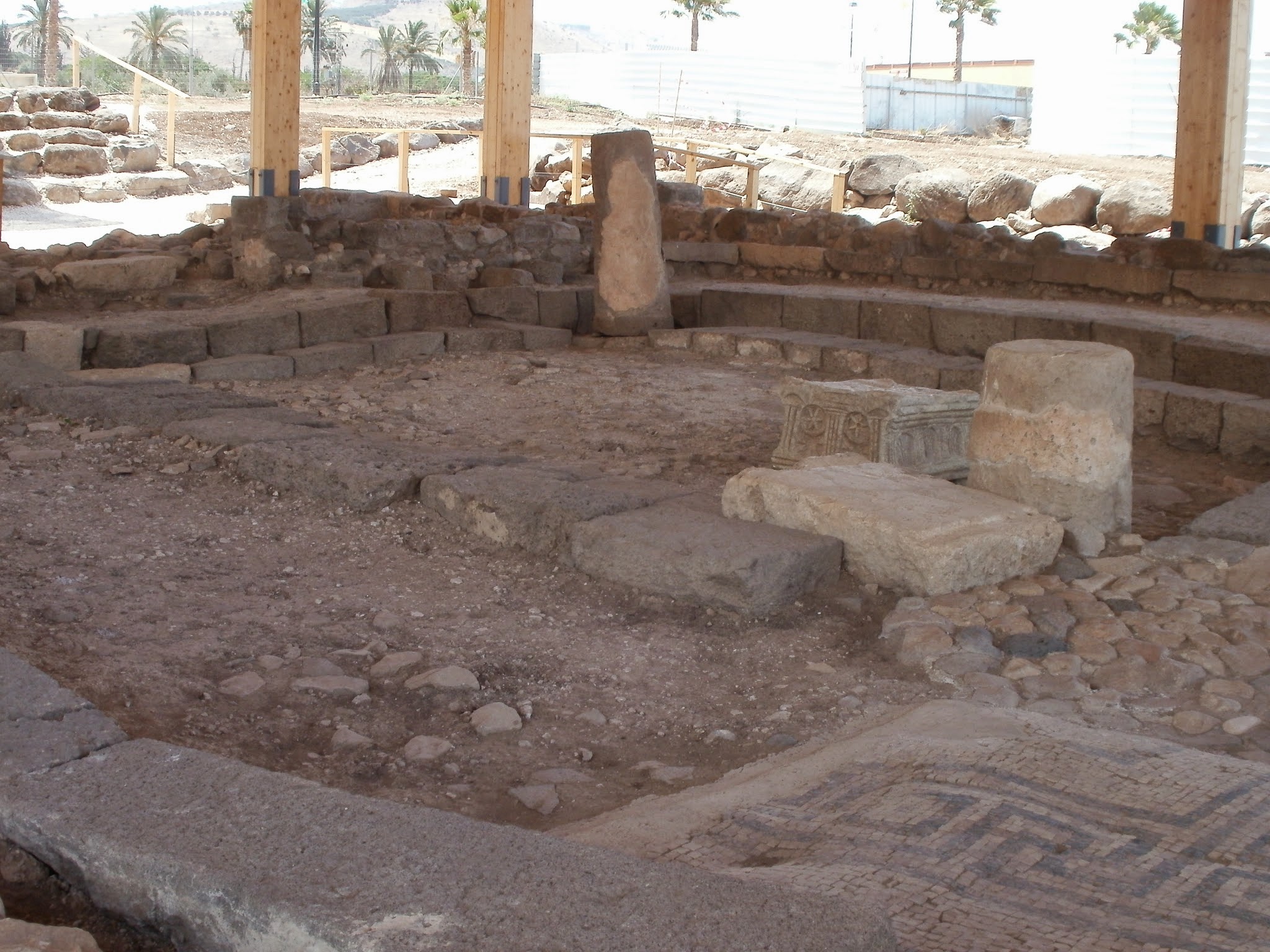 During the First Century, the small city of Magdala sat on the west-northwest side of the Sea of Galilee. It was a fishing village with fairly significant industry in fish preservation. As students of the Bible, we associate the city of Magdala as the probable home of Mary Magdalene. Her last name was not "Magdalene", she was a "Magdalene" (an citizen of Magdala).
During the First Century, the small city of Magdala sat on the west-northwest side of the Sea of Galilee. It was a fishing village with fairly significant industry in fish preservation. As students of the Bible, we associate the city of Magdala as the probable home of Mary Magdalene. Her last name was not "Magdalene", she was a "Magdalene" (an citizen of Magdala).
 In the First Century, as northbound travelers along the Via Maris (the "Way of the Sea") made their way through the Arbel Pass, they would arrive at the Sea of Galilee very near Magdala.
In the First Century, as northbound travelers along the Via Maris (the "Way of the Sea") made their way through the Arbel Pass, they would arrive at the Sea of Galilee very near Magdala.
When I visited Israel for the first time in 2010, archaeologists were just starting to work on the site of Magdala. When I returned in 2012, the site was open to visitors, but access was extremely limited. You were not allowed to take photographs and most of the most interesting areas could not be seen up close. However, when I returned in June of this year, I was pleased to learn that they have opened up the site extensively and even offer limited tours with their staff.
 One of the highlights of a visit to Magdala is the opportunity to see the remains of a First Century synagogue. In the general area, there have been seven synagogues of that time frame found. However, this is the only one on the shores of the Sea of Galilee and this one is very well preserved. Not only can you see the exact size of it, you can see parts of the exterior corridors, the original mosaic floors and some of the original frescos on the walls. It is a tremendous find and very exciting to see.
One of the highlights of a visit to Magdala is the opportunity to see the remains of a First Century synagogue. In the general area, there have been seven synagogues of that time frame found. However, this is the only one on the shores of the Sea of Galilee and this one is very well preserved. Not only can you see the exact size of it, you can see parts of the exterior corridors, the original mosaic floors and some of the original frescos on the walls. It is a tremendous find and very exciting to see.
Being able to visit a site like Magdala gives you better understanding to many verses in the Gospels in which it discusses Jesus going through the cities and villages of Galilee teaching in the synagogues. Did Jesus visit this synagogue in Magdala? Well, the Gospels never record that He did. However, I would suggest to you that it is a good possibility that He did.
